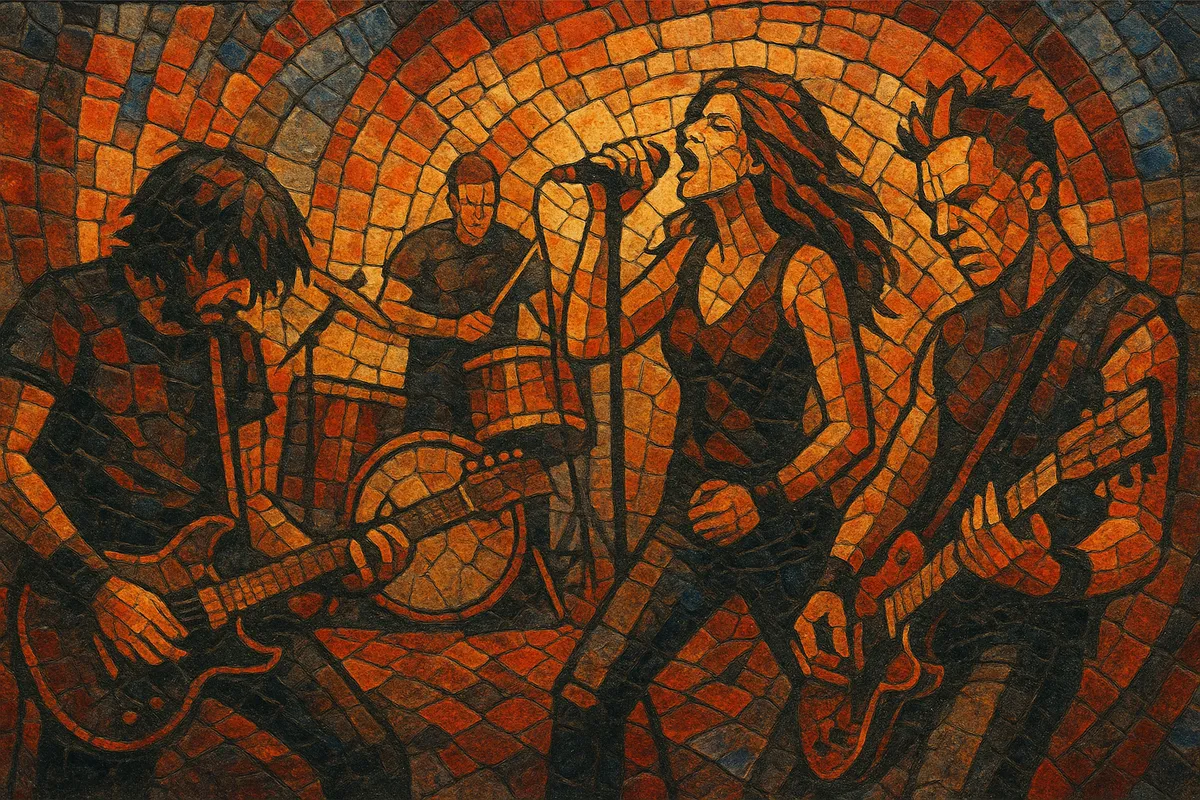
Rock musical is a stage musical whose primary musical language is rock and its closely related pop-rock idioms.
It brings the instrumentation, vocal style, rhythmic drive, and production aesthetics of rock into musical theatre storytelling, typically with amplified bands, electric guitars, drum kit, and contemporary vocal belting.
Narratively, rock musicals blend character-driven songs and scene-integrated numbers with hooks, anthemic choruses, and recurring motifs, addressing themes such as youth culture, counterculture, identity, politics, and social change.
While some works are through-sung like rock opera, many rock musicals retain book-musical dialogue, combining theatre craft with the immediacy and energy of live rock performance.
Rock musical emerged in the late 1960s, when the sound and ethos of rock moved into mainstream theatre. Hair (1967, USA) is widely cited as a landmark for integrating a rock band, countercultural themes, and a contemporary pop-rock score into a book musical. Near the turn of the decade, the rock-opera approach also informed stage works, with The Who’s Tommy (1969 concept album; later staged) and the British team of Andrew Lloyd Webber and Tim Rice crafting Jesus Christ Superstar (1970 concept album; 1971 stage), which blended theatrical storytelling with amplified rock.
The 1970s broadened the form: Godspell (1971) fused pop-rock with parable-style storytelling, The Rocky Horror Show (1973) mixed glam-rock camp with horror pastiche, and Grease (1971) reimagined 1950s rock and roll nostalgia for the stage. By the late 1970s and 1980s, pop/rock-inflected mega-musicals (e.g., Evita, 1978) normalized amplified bands and contemporary vocal styles in commercial theatre, while rock aesthetics continued to shape orchestration, vocal delivery, and staging.
Rock musical saw a new wave with Rent (1996), which married alt-rock and pop to urgent, socially conscious drama. The period also produced cult and crossover titles such as Hedwig and the Angry Inch (1998), as well as the Broadway staging of The Who’s Tommy (1993). In the 2000s, Spring Awakening (2006) paired folk-rock and alt-rock textures with a historical narrative, and Next to Normal (2008) used a rock band to underscore psychological realism.
In the 2010s and beyond, the form diversified and globalized: American Idiot (2010) brought punk-pop energy to Broadway, We Will Rock You (2002) and other jukebox vehicles leveraged iconic rock catalogs for theatre narratives, and School of Rock (2015) extended the Webber lineage with guitar-driven youth ensembles. The rock musical now coexists with pop, folk, and electronic inflections, while maintaining the core promise of rock energy applied to character and story.

